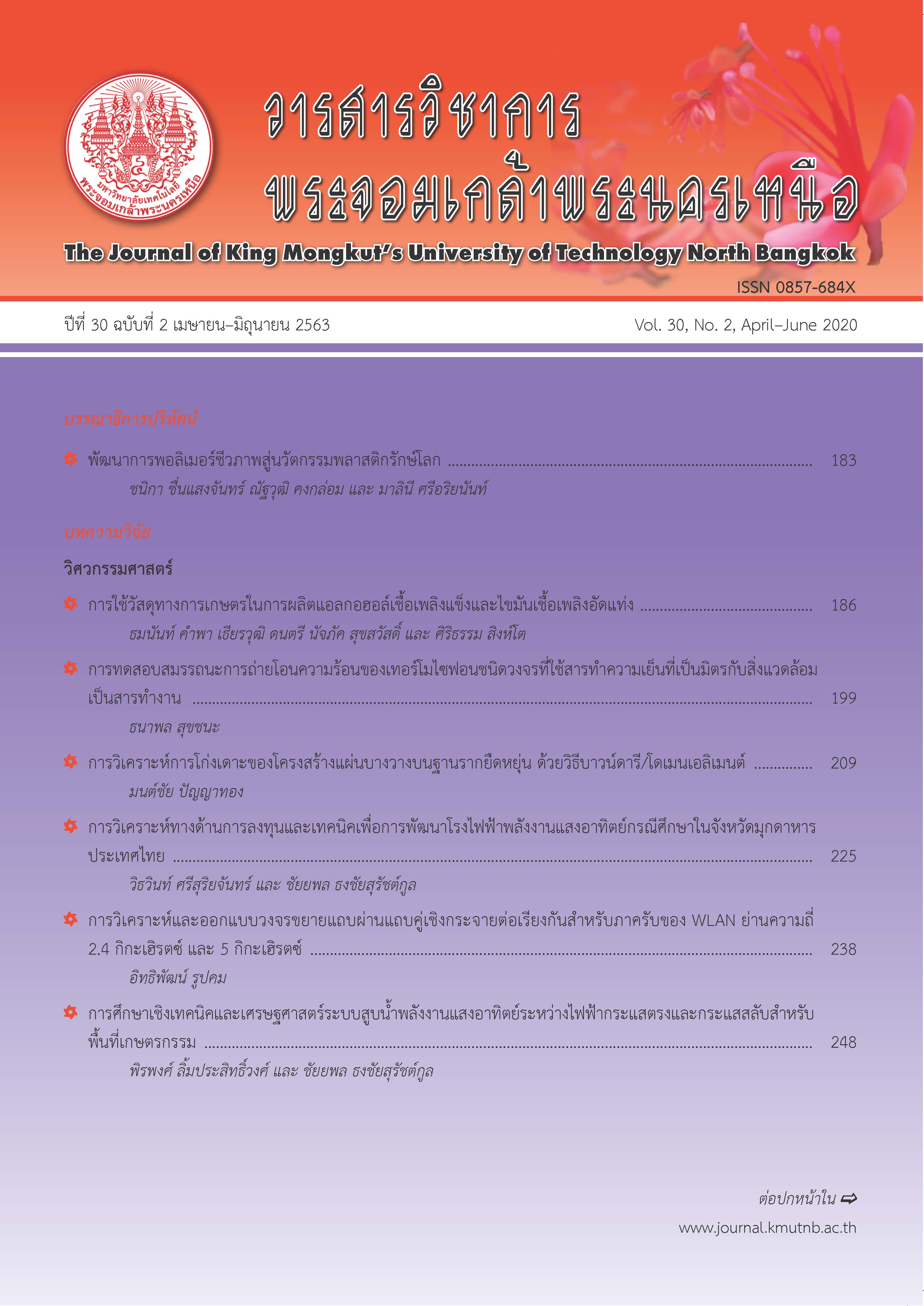The Designing and Comparing of Fast Picking Area for Lighting Products
Main Article Content
Abstract
Faced with a fluctuation of demands and a long import lead time, a distribution center has proved to be a strategic infrastructure in a supply chain that regulates a product flow. To ensure a quick response time and affordable operating cost, personnel in a distribution center must understand its distributing patterns and explore them to be able to rapidly respond to customer needs. Meanwhile the operating costs would be handled effectively. An example is demonstrated in a case study lighting product distribution center. Lighting products are varied in sizes and shapes. Some products are fragile and require delicate handling, resulting in the necessity of maximum number of working hours and the greatest number of workers. On the basis of the historical shipping data, a preliminary analysis reveals that just a few brands are generally chosen by customers. Therefore, the aim of this article is to propose a dedicated zone for these popular items, the so-called Fast Pick Area (FPA) to reduce response time, minimizing search for the storage location. By the simplification of relationship between number of visits and cubic volume of each item, candidate items are ranked and storage location can be allocated in an FPA. To evaluate the FPA as well as designed parameters, the procedures are embedded into a Monte Carlo simulation model of entire lighting production distribution.
Article Details
The articles published are the opinion of the author only. The author is responsible for any legal consequences. That may arise from that article.
References
[2] E. Frazelle. World-Class Warehousing and Material Handling. New York: McGraw-Hill Education, 2002.
[3] J. Gu, M. Goetschalckx, and L. McGinnis, “Research on warehouse operation: A comprehensive review,” European Journal of Operation Research, vol. 177, pp. 1–21, 2007.
[4] J. J. Bartholdi and S. T. Hackman, (2017, August). Warehouse & Distribution Science. (Release 0.98) [Online]. Available: https://www.warehousescience.com/book/editions/wh-sci-0.98.1.pdf
[5] J. Gu, M. Goetschalckx, and L. McGinnis, “Research on warehouse operation: A comprehensive review,” European Journal of Operation Research, vol. 203, pp. 539–549, 2010.
[6] O. Kittithreerapronchai, “Improve picking activity,” Warehouse and Warehousing Management. Bangkok: Industrial Engineering Chulalongkorn University, 2018 (in Thai).
[7] B. Yongprasert and O. Kittithreerapronchai, “Design of fast-moving area for automotive assembly plant,” Kasetsart Engineering Journal, vol. 91, pp. 71–81, 2015 (in Thai).
[8] J. Gagliardi, J. Renaud, and A. Ruiz, “A simulation model to improve warehouse operations,” in Proceedings of the 2007 Winter Simulation Conference, 2007, pp. 2012–2018.
[9] J. J. Bartholdi and S. T. Hackman, “Allocating space in a forward pick area of a distribution center for small parts,” IIE Transactions, vol. 40, no. 11, pp. 1046–1053, 2008.
[10] M. Napolitano, “Warehouse time standards,” in The Time, Space & Cost Guide to Better Warehouse Design, 2nd ed. New York: Distribution Center Management, 2003, pp. 18–35.
[11] P. Chaovalitwongse, “Probabilistic inventory model,” Determining Inventory Policy Theories and a Systematic Thinking Approach. Bangkok: Chulalongkorn University Press, 2018 (in Thai).
[12] O. Jones, R. Maillardet, and A. Robinsin, Introduction to Scientific Programming and Simulation Using R. Parkville, Australia: University of Melbourne, 2014.

